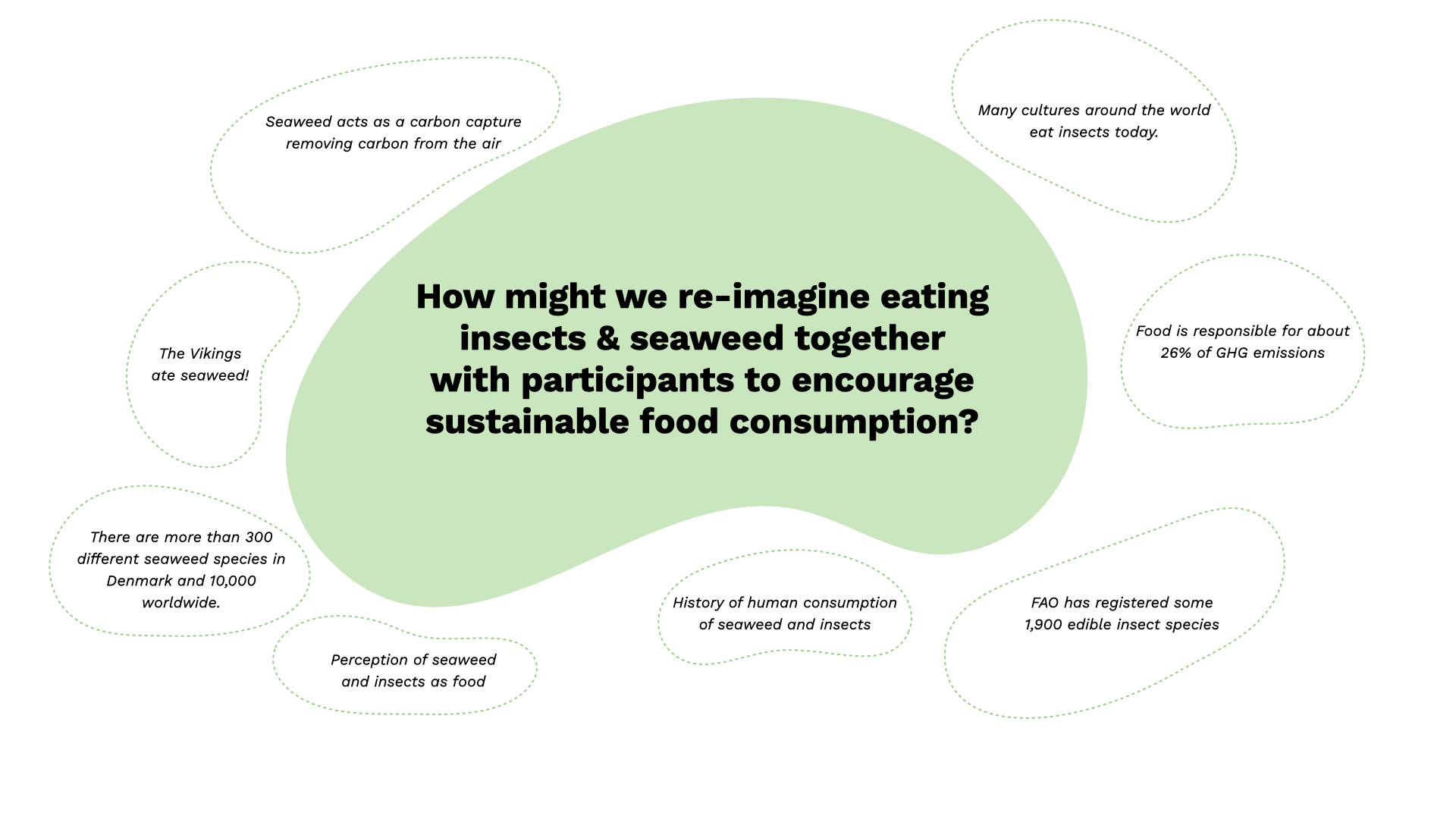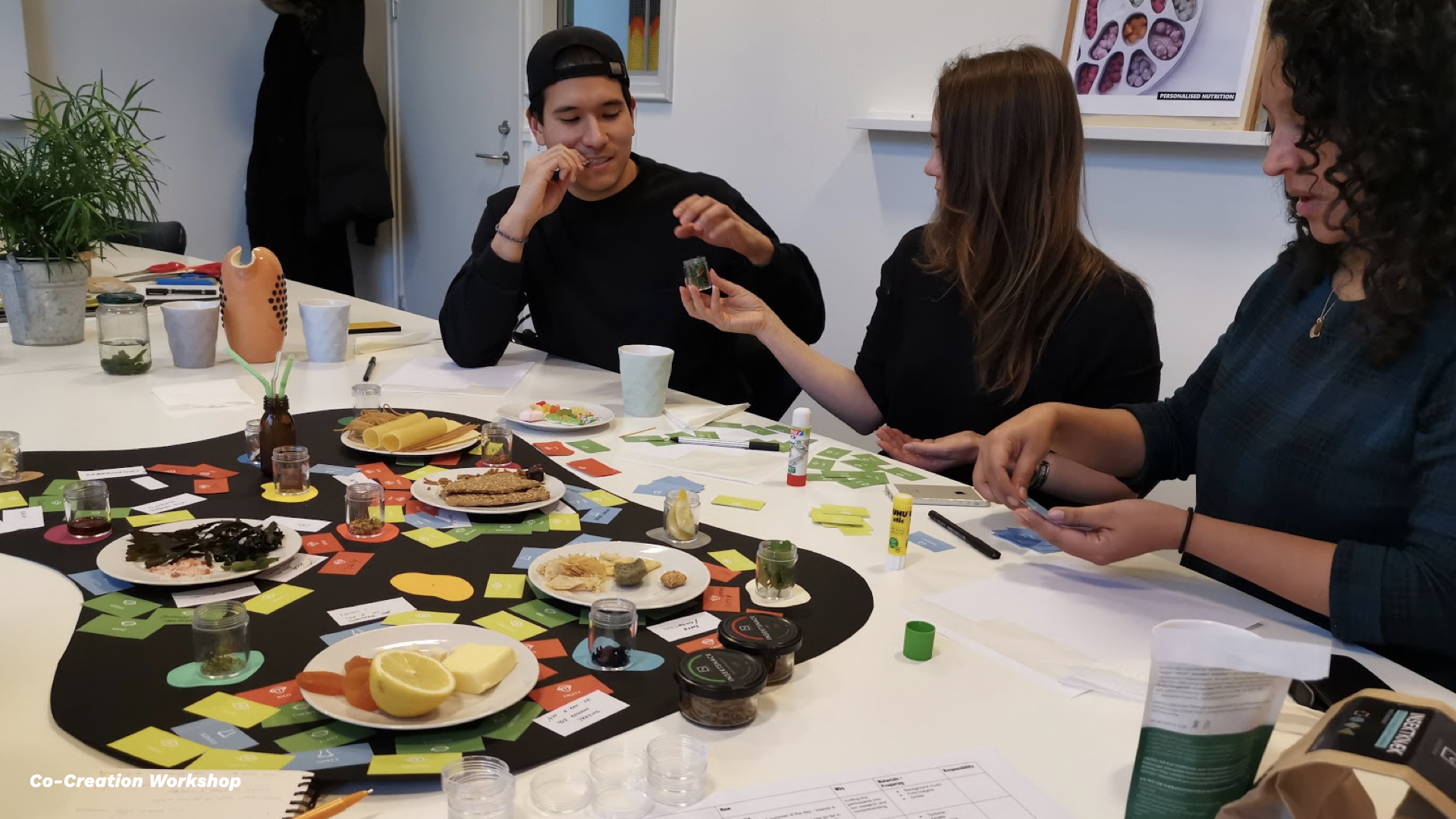FUTURIVORE
CO-CREATING EVERYDAY FOODS WITH INSECTS & SEAWEED
Participatory Exploration of Everyday Foods
PROJECT DESCRIPTION
Together with Roseanne Kimber, we explored the transition to sustainable food ingredients through participatory design with a focus on sensorial exploration and future speculation.
We were invited to present the project at the Porto Design Biennale's 'Colloquium IV – Animating Everyday Heterotopias' in 2021, which was dedicated to exploring forms of everyday heterotopias that can contribute to the creation of new possibilities and paths to grasp different ways of thinking and being in the world. You can watch our talk titled ‘Co-Creating Everyday Foods – with Insects and Seaweed!’ can be seen here or you can read a chapter on the developed participatory framework in the book Post—Normal Design: Emergent approaches towards plural worlds.
You can read about it our participation in Porto Design Biennale here.
You can read about it our participation in Porto Design Biennale here.
RESEARCH
Working with food was a strategic consideration because of its presence in everyday life and its significant impact on our planet. Seaweed and insects are identified as a sustainable of food options, because of the way we could farm them but also because of its nutritional value.
We found them interesting work with because of our perception of them as food and their history of consumption. Our 7-week project was build around the question how might we re-imagine eating insects and seaweed together with participants to encourage sustainable food consumption.
We used Sanders & Stappers’ Path of Expression as a backbone of our research.
The process consisted of understanding the present perception of these ingredients, with a Dialogue Tool to understand people’s reactions to these food items. Then we built upon these insights through sensory co-creation to explore preferable future food possibilities.


DIALOGUE TOOL
The Dialogue Tool is a guided visual interview tool with various statements and questions to create a baseline. It helped us see where are our participants in this food transition. We identified some of the barriers holding back these ingredients from being adopted into everyday life here in Denmark.

MAP OF PARTICIPANTS
The Map of Participants shows how involved they are in the transition to new ingredients. The inner area shows those participants who are experts in the field, the middle area shows the possible first movers, and the outside area shows participants who showed curiosity but not familiar with these foods.

PARTICIPATORY SESSION
With the participatory workshop we created an environment for imagination and future thinking with a focus on our senses. We have built a land/food-scape with 12 different smells, 6 plates of food products with different appearances, tastes and mouthfeels. We reflected on past memories by envisioning future dishes.
Our participants explored the sensory landscape together, (pre-covid) smelling, touching, tasting and discussing the ingredients -sharing their memories, thoughts and associations as they moved through the landscape.
They discussed the preferred form of foods appearance, smell, taste and mouthfeel and shared memories, thoughts and associations.



FINDINGS & INSIGHTS
What was clear was that everyone created ideas of something that was convient - personalised for their needs, but they were all in different time scales, from food as medicine, to personalised nutrition and the future Thanksgiving meal.
Based on the co-created food prototypes we created a meal inspired by the sensory characteristics of dried mealworms and seaweed. You can see it here in the picture, our delicious seaweed bread, two tastey mealworm sausages and the spicy seaweed mustard, as an example of the future foods that can be created through this method. This meal is convient, comforting, easy to make at home and familiar in appearance, taking us all a step closer to the preferred future of using these sustainable ingredients.

